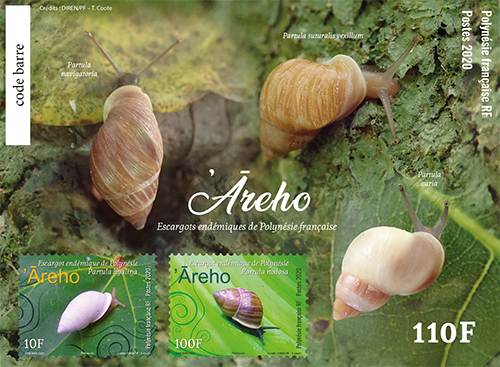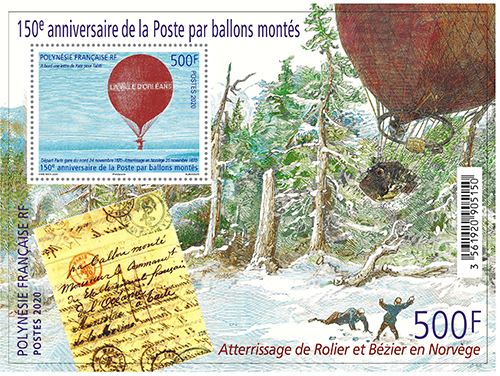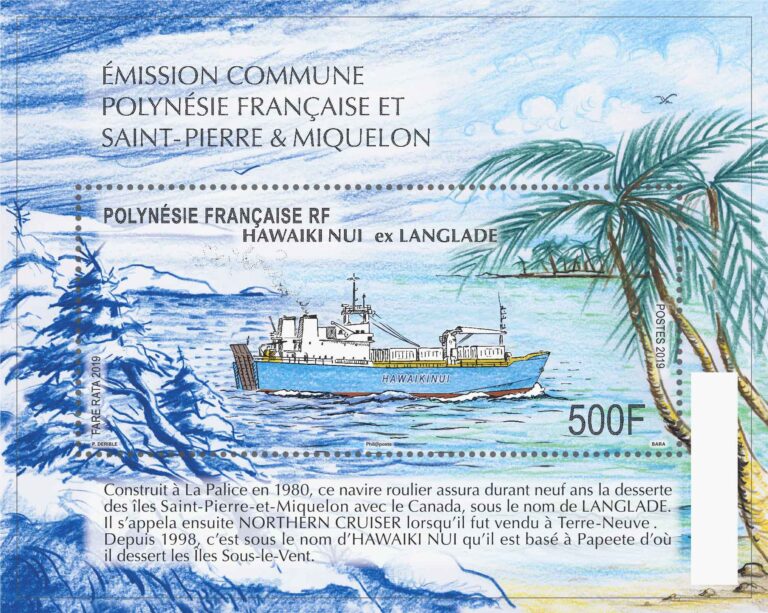Escargots endémiques : ‘Areho ou Partula
La famille des Partula, ou « ‘areho » en tahitien, était autrefois bien implantée dans les îles du Pacifique, mais s’était quasiment éteinte il y a 30 ans. Leurs coquilles étaient, jadis, très recherchées pour la fabrication de colliers, couronnes et de parures du fait de leur grande diversité de couleurs et de formes. De toute petite taille, ces espèces d’escargots arboricoles furent décimées par l’escargot carnivore Euglandina rosea, autre espèce d’escargot introduite par l’homme. Ce dernier avait été importé et introduit en tant qu’agent de contrôle biologique contre la peste agricole qu’est l’escargot géant africain (Lissachatina fulica). L’archipel de la Société hébergeait à lui seul plus de la moitié des espèces connues dans le monde. Malheureusement, depuis les années 1970, on estime qu’une soixantaine d’espèces se sont éteintes sur les 75 espèces répertoriées. Néanmoins, dans les années 1980, des biologistes ont pu collecter divers spécimens d’une quinzaine d’espèces différentes avant leur disparition définitive. Ils ont su par la suite maîtriser la survie et la reproduction de ces animaux dans des zoos étrangers. En 2010, suite au constat d’une forte réduction de la présence de l’escargot carnivore dans les forêts polynésiennes, il a été envisagé de réintroduire depuis les zoos certaines des espèces d’ « ‘areho » disparues du milieu naturel. Dès juillet 2015, après définition des conditions zoo sanitaires d’importation, 269 escargots appartenant à trois espèces distinctes ont été relâchés directement dans le milieu naturel sur des arbres au sein d’une vallée de Paea à Tahiti. Fin 2019, ce sont 15.765 animaux appartenant à 14 espèces différentes qui ont été relâchées à Tahiti-Moorea-Raiatea et Huahine. Contrairement aux apparences et malgré sa petite taille cette espèce est très rapide par rapport à ses congénères et elle vit dans les arbres. Les scientifiques sont donc optimistes quant à ses chances de survie en milieu naturel. Toutefois, ces petits escargots restent sous surveillance d’autant plus que d’autres menaces potentielles sont identifiées comme le ver de Nouvelle-Guinée.
Fare rata, la Poste de Polynésie est fière de contribuer au travers de cette émission philatélique à la préservation des espèces endémiques de notre fenua.
Endemic snails : ‘Areho or Partula
The Partula family, or « areho » in Tahitian, was once well established in the Pacific Islands, but had almost disappeared 30 years ago.
Their shells were back then highly sought after for the handmade necklaces, crowns and ornaments because of their wide variety of colours and shapes. Of tiny size, these species of tree snails were decimated by the carnivorous snail Euglandina rosea, another species of snail introduced by man. It had been imported and introduced as a biological control agent against agricultural plague, the African giant snail (Lissachatina fulica). The Society archipelago alone housed more than half of the world’s known species. Unfortunately, since the 1970s, it has been estimated that some 60 species have died out of the 75 listed species.
Nevertheless, in the 1980s, biologists were able to collect various specimens from about 15 different species before their final disappearance. They were able to control the survival and reproduction of these animals in foreign zoos. In 2010, following the observation of a strong reduction in the presence of the carnivorous snail in the Polynesian forests, it was considered to reintroduce from foreign zoos some of the species of «areho», disappeared from the natural environment. As early as July 2015, following the establishment of animal health import conditions, 269 snails belonging to three distinct species were released directly into the natural environment on trees in the valley of Paea in Tahiti. At the end of 2019, 15,765 animals belonging to 14 different species were released in Tahiti-Moorea-Raiatea and Huahine. Contrary to appearances and despite its small size, this species is very fast compared to its congeners and it lives in trees. Scientists are therefore optimistic about its chances of survival in the natural environment. However, these small snails remain under surveillance, especially since other potential threats are identified as the New Guinea worm.
Fare rata, the Post Office of Polynesia is proud to contribute through this philatelic program to the preservation of endemic species of our fenua.





Avis
Il n’y a pas encore d’avis.